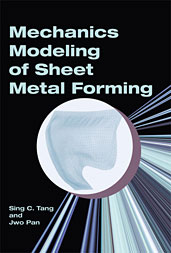Technical Paper
Multi-Disciplinary Aerodynamics Analysis for Vehicles: Application of External Flow Simulations to Aerodynamics, Aeroacoustics and Thermal Management of a Pickup Truck
2007-04-16
2007-01-0100
During the design process for a vehicle, the CAD surface geometry becomes available at an early stage so that numerical assessment of aerodynamic performance may accompany the design of the vehicle's shape. Accurate prediction requires open grille models with detailed underhood and underbody geometry with a high level of detail on the upper body surface, such as moldings, trim and parting lines. These details are also needed for aeroacoustics simulations to compute wall-pressure fluctuations, and for thermal management simulations to compute underhood cooling, surface temperatures and heat exchanger effectiveness. This paper presents the results of a significant effort to capitalize on the investment required to build a detailed virtual model of a pickup truck in order to simultaneously assess performance factors for aerodynamics, aeroacoustics and thermal management.

